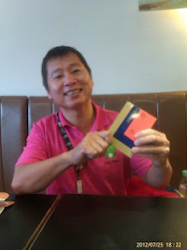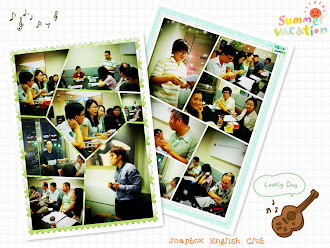陽光甜味咖啡館 Sun Sweet Cafe
We meet right here every Tuesday, Friday and Saturday evening.
Dare to dream!
勇敢夢!
LOVE YOURSELF!
愛自己!
歡迎您加入 英文/知識/交友 文章請點選欄位
周六(2/29)1.科學家算出你的壽命2.媽祖遶境
晚上9:30
No comments
科學家算出你的壽命
Scientists Calculated How Much Longer You Can Live With a Healthy Lifestyle
By Alice Park TIme
Study after study reminds us that as challenging as it can be, sticking with healthy habits—eating right, exercising regularly, not smoking, maintaining a healthy weight, and controlling how much alcohol you drink—can help us to live longer. But tacking on extra years isn’t so appealing if some or most of them are riddled with heart disease, diabetes or cancer.
In a 2018 study, an international group of researchers led by scientists at Harvard T.H. Chan School of Public Health found that adopting five healthy habits could extend life expectancy by 14 years for women and by 12 years for men:
eating a diet high in plants and low in fats
exercising at a moderate to vigorous level for several hours a week
maintaining a healthy body weight
not smoking
consuming no more than one alcoholic drink a day for women and two for men
Why Do Women Live Longer Than Men?
The numbers don’t lie: women tend to live longer than men. The average American man will live to age 76, according to the latest CDC figures, while the average woman in America will live to age 81.
To follow up on that data, the researchers wanted to know how many of those added years were healthy ones, free of three common chronic diseases: heart disease, type 2 diabetes and cancer. And in a study published Jan. 8 in BMJ, they report that a healthy lifestyle can indeed contribute to more—and more disease-free—years of life. The results suggest that women can extend their disease-free life expectancy after age 50 by about 10 years, and men can add about eight years more, than people who don’t have these habits.
“It’s important to look at disease-free life expectancy because that has important implications in terms of improving quality of life and reducing overall health care costs,” says Dr. Frank Hu, chair of the department of nutrition at Harvard T.H. Chan School of Public Health and senior author of the paper. “Extending lifespan is not sufficient, we want to extend health span, so the longer life expectancy is healthy and free of major chronic diseases and disabilities associated with those diseases.”
Related Stories
Should I Give My Child Juice? Here’s What Experts Say
Why We Don't Need Animals to Keep Enjoying Meat
To figure out those patterns, the researchers analyzed data collected from more than 111,000 U.S. women and men who were between the ages of 30 and 75 when they enrolled in the Nurses Health Study or the Health Professionals Follow-Up Study beginning in 1980 and 1986, respectively. The participants answered questionnaires about their lifestyle habits and their health every two years through to 2014. Based on their answers, each participant was given a “lifestyle” score from 0-5, with higher scores representing better adherence to healthy guidelines. The researchers then attempted to correlate these scores to how long the participants lived without heart disease, cancer or diabetes.
Women who reported satisfying four or five of the healthy habits lived on average 34 more years without those diseases after age 50 compared to 24 years for women who said they did not follow any of the healthy habits. Men who reported fulfilling four or five of the lifestyle habits lived on average 31 more years free of disease after age 50 while those who adopted none of them lived on average 23 more years after age 50.
Hu says that none of the five factors stood out as more important than the others; the benefits in saving people from disease and in extending life were similar across all five. Further, the evidence suggests that the contributions of each factor are additive—the number of years of disease-free life gained increased with each additional healthy habit people followed. “People shouldn’t be discouraged from adopting them if they find one or two factors difficult to follow,” says Hu.
And because all of the participants in the study were over age 30, the findings also suggest that “it’s never too late to change,” Hu says. “It’s always better to adopt healthy lifestyle habits as early as possible, but even adopting them relatively late in life is still going to have substantial health benefits later on.”
媽祖遶境
Taiwan's annual Dajia Matsu Pilgrimage be... | Taiwan News
Goddess Matsu and her followers are making an annual pilgrimage through 4 counties traveling over 400 km
TAIPEI (Taiwan News) – The annual pilgrimage of the goddess Matsu and her followers kicked off early Monday morning, April 8, in Miaoli County, attracting over 50,000 pilgrims at the start of this year's procession.
The procession from Baishatun Gongtian Temple (白沙屯拱天宮) in Miaoli’s Tongyu Township (通霄鎮) began at 1:20 a.m. and will travel south for the next 10 days. It will make stops at over 60 temples along the route, in four different counties.
The annual pilgrimage is one of the the largest folk religious traditions in Taiwan, practiced for over 200 years. Every year, the Matsu idol is carried in a sedan by followers for over 400 km, from Miaoli, south to Dajia District of Taichung, and then to Chiayi and back.
Along the way, there will be plenty of merry-making, dancing, fireworks, and lines of religious supplicants who seek Matsu’s blessings for a safe and prosperous year. Supplicants receive the blessing by kneeling on the path before the sedan, and allowing the goddess to pass over them.
Footage from the first day of the procession, shared by the Baishatun Gongtian Temple, can be viewed below.
The religious tradition is classified as an intangible cultural heritage asset by the government.
This year, as the old religious tradition meets new technologies, the pilgrimage organizers have introduced a special smartphone app for people to keep track of the Matsu procession.
By using the app, offered by the Baishatun Gontian Culture Society (拱天宮文化組) users can locate the goddess’ current location, reports Liberty Times. The Baishatun Mazu app (search for "白沙屯媽祖"in the app store) can be used by those seeking Matsu’s blessings, or alternately, by those seeking to avoid stalled traffic on roads blocked by the religious procession.
周五(2/28)1.為何會被某些人吸引?2.會雙語腦的好處
凌晨4:37
No comments
新埔捷運站1號出口 旁邊7-11巷子進入20公尺 看到夏朵美髮左轉


為何會被某些人吸引?
Why you're attracted to certain people, and not others
Cheyenne Lentz insider.com
When it comes to love, most people have an idea of what they're looking for in a partner.
Good looks, ambition, and a good sense of humor are common qualities that people seek out.
But there are other factors you're likely unaware of that play an important part in who you're attracted to.
Past experiences, proximity, and biology all have a role in determining who catches our attention and who doesn't.
When we fall for someone, it's tough to stop gushing about our new crush's good looks, sense of humor, and those undeniable love sparks. But why is it that we're just naturally attracted to some people and not others?
Sure, love is mysterious, but, in some ways, attraction is not. Science actually has an explanation for why we are attracted to certain people and why we don't give others the time of day.
INSIDER spoke to several experts to find out what it is that draws us towards certain people in terms of our biological makeup. It's worth noting that much of the research about attraction tends to focus on heterosexual relationships, but obviously that's not the limit of attraction or love.
Proximity plays a role in who you're attracted to.
Have you ever noticed that it's not uncommon to see co-stars from your favorite series or movie dating in real life? Rachel McAdams and Ryan Gosling, for instance, dated on and off for three years off screen after starring together in "The Notebook." Or maybe you remember that Jennifer Garner and Ben Affleck started dating the year after the release of "Daredevil" back in 2003. Why does this seem to be a pattern?
"Mere exposure to someone repeatedly increases the likelihood we will be attracted to them," J. Celeste Walley-Jean, dean of the School of Graduate Studies and associate professor of psychology at Clayton State University, told INSIDER.
This is backed up by 50 years worth of scientific research that has found that proximity is one of the most powerful indicators of attraction. We simply are drawn to the people we see frequently, which explains why celebrity co-stars end up getting together due to how closely they work with one another on a regular basis.
People can be attracted to those who look healthy and fertile.
Whether we realize it or not, we are biologically attracted to people who look healthy and who look like they can reproduce.
"Heterosexual men are typically attracted to younger women who appear to be of childbearing age and physical appearance," Walley-Jean told INSIDER. This can explain why you see photos of women in the 1800s wearing bustles to overemphasize their healthy, childbearing hips in order to attract men.
Additionly, research suggests that people are also attracted to those who look healthy. Face symmetry, face structure, and hip-shoulder ratios are all important when it comes to attraction because these physical features indicate good health, according to Live Science.
Our environment teaches us who we should view as attractive.
Beyond physical features, Walley-Jean said our families, peers, and media all play a role in helping us learn what to view as attractive.
For instance, some heterosexual people may seek out partners who share attributes that remind them of their opposite-sex parent because that is what they've always known growing up.
"Heterosexual women have been socialized to seek primarily 'older' men who tend to be more financially established and can 'take care' of the woman and the subsequent family," Walley-Jean told INSIDER.
These are just a couple of examples of how we can learn who or what is attractive. There is no single way this learning occurs but everyone is influenced by it, Walley-Jean explained.
Personality traits might impact who you're attracted to.
Research has shown that people who are kind are seen as more attractive, Daniel Sher, registered clinical psychologist, and professional consultant for the Between Us Clinic said.
In a 2007 study, participants were asked to rate photos of strangers for attractiveness. They were then asked to evaluate the same photos, but this time some of the photos had personality descriptions.
Essentially, the study found that the photos with positive descriptions received the highest ratings for attractiveness, suggesting that certain personality traits do play a factor in judging attractiveness.
Hormones play a role in attraction.
One 2016 study found that men with high levels of testosterone, the primary male sex hormone, may be more attracted to women with more "feminine" faces, which they described as meaning big eyes, high eyebrows, and a smaller jaw.
But that's not the only way hormones play a role in attraction.
In a study of 238 college women published in the Journal of Personality and Social Psychology in 2007, Steve Gangestad, professor of psychology at the University of New Mexico, and his colleagues found that women are attracted to certain men depending on where they are in their cycle.
In mid-cycle, women tended to prefer flings with "caddish" men and on average, fertile women were more interested in short-term relationships with men who came across as cocky.
In comparison, at other points in their cycle, they gravitated toward longer-term relationships with kinder, more conscientious, deferential types, those who have stereotypically good father material.
會雙語腦的好處
The benefits of a bilingual brain - Mia Nacamulli
If you answered, "sí," "oui," or "是的" and you're watching this in English, chances are you belong to the world's bilingual and multilingual majority. And besides having an easier time traveling or watching movies without subtitles,
knowing two or more languages means that your brain may actually look and work differently than those of your monolingual friends.
So what does it really mean to know a language?
Language ability is typically measured in two active parts, speaking and writing, and two passive parts, listening and reading. While a balanced bilingual has near equal abilities across the board in two languages, most bilinguals around the world know and use their languages in varying proportions.
And depending on their situation and how they acquired each language, they can be classified into three general types. For example, let's take Gabriella, whose family immigrates to the US from Peru when she's two-years old.
As a compound bilingual, Gabriella develops two linguistic codes simultaneously with a single set of concepts, learning both English and Spanish as she begins to process the world around her. Her teenage brother, on the other hand, might be a coordinate bilingual, working with two sets of concepts, learning English in school, while continuing to speak Spanish at home and with friends.
Finally, Gabriella's parents are likely to be subordinate bilinguals who learn a secondary language by filtering it through their primary language. Because all types of bilingual people can become fully proficient in a language regardless of accent or pronunciation, the difference may not be apparent to a casual observer.
But recent advances in brain imaging technology have given neurolinguists a glimpse into how specific aspects of language learning affect the bilingual brain.
It's well known that the brain's left hemisphere is more dominant and analytical in logical processes, while the right hemisphere is more active in emotional and social ones, though this is a matter of degree, not an absolute split.
The fact that language involves both types of functions while lateralization develops gradually with age, has lead to the critical period hypothesis. According to this theory, children learn languages more easily because the plasticity of their developing brains lets them use both hemispheres in language acquisition, while in most adults, language is lateralized to one hemisphere, usually the left.
If this is true, learning a language in childhood may give you a more holistic grasp of its social and emotional contexts. Conversely, recent research showed that people who learned a second language in adulthood exhibit less emotional bias and a more rational approach when confronting problems in the second language than in their native one.
But regardless of when you acquire additional languages, being multilingual gives your brain some remarkable advantages. Some of these are even visible, such as higher density of the grey matter that contains most of your brain's neurons and synapses, and more activity in certain regions when engaging a second language.
The heightened workout a bilingual brain receives throughout its life can also help delay the onset of diseases, like Alzheimer's and dementia by as much as five years.
周六(2/22)1.日本食物預防感冒 2.助人會快樂減壓力!
晚上9:30
No comments
新埔捷運站1號出口 旁邊7-11巷子進入20公尺 看到夏朵美髮左轉
日本食物預防感冒
5 All-Natural Japanese Remedies To Fight And Prevent Colds - Savvy Tokyo
Julia Mascetti savvytokyo
Prevent any colds and boost your immune system with these five age-old natural cures.
Despite having a lot of sunshine in Tokyo lately, it’s still cold and the flu season is likely to stick around for at least another couple of weeks. While drugstores offer a variety of products that help prevent colds, there are also some traditional obachan-approved Japanese natural ways that do exactly the same (without pumping your body with artificial chemicals). If you’re in need of a quick fix for your condition or you just don’t want to end up as the rest of your coughing colleagues and friends, here are five of those home-made “cold cures” that have been used throughout Japan’s history to battle early symptoms of unpleasant fevers, colds and the flu.
1. Umeboshi (pickled plum)
Umeboshi, or pickled plums, are known for their very distinctive sour yet pungent flavor, but each is in fact packed with wonderful medicinal qualities, stretching from having an alkalizing effect on the body, helping to fight fatigue, being a great rescue to a hangover, and aiding digestion. The umeboshi are found in almost all Japanese households and bentos, strategically placed in the center of the rice to kill germs and preserve the fresh taste. They can be eaten on their own, with rice, even added to tea or hot water.
If you are feeling unwell, try adding one or two umeboshi to some boiled water and stir until you have broken up the umeboshi into tiny little pieces. Drinking this tea will help fight flu-like nausea and will also help to eliminate any toxins from your body. It will also cause you to sweat which will help stimulate your immune system, thus helping you to get better faster. Umeboshi can be found in supermarkets and convenience stores.
2. Hachimitsu-Daikon (Honey with Daikon)
The name itself is probably making you cringe, but hachimitsu-daikon is an old grandma-guaranteed natural remedy for colds, coughs, and even sore throats. Daikon (white Japanese radish) is packed with Vitamin C and rich in special enzymes that act as mucolytic agents — in other words, help to dissolve and expel mucus. Honey has natural antibiotic as well as anti-inflammatory properties which are effective in soothing throat inflammation. Basically, hachimitsu-daikon is a Japanese form of cough and throat syrup.
To prepare it at home, simply chop about a handful of daikon and put it into a glass container, then cover the chopped daikon evenly with honey and put the lid on. Leave the honey-daikon mixture at room temperature for approximately three to four hours. The prepared syrup can be taken 2-3 times a day (1 Tbsp./time) either straight or by adding a tablespoon to a cup of hot water to make a soothing tea. The mixture will last for about a week when stored in the fridge. It is preferable to use pure organic honey, such as manuka, as cheaper options often have corn syrup mixed into the bottle or jar. Manuka honey has incredible healing powers and if often even used to treat open difficult-to-heal ulcers and body sores, severe inflammation of the esophagus, amongst many many other illnesses and symptoms.
3. Shoga-Yu (Hot Ginger Tea)
Shoga-yu, or hot ginger tea, is one of the most common and easily accessible home remedies for colds in Japan. Tea made from ginger has high levels of vitamin C and amino acids, as well as various trace elements such as calcium, zinc, sodium, phosphorus, and many others. Ginger also has a warming effect which is ideal for those combating a cold or flu.
To make the tea, boil a small pot of water with a medium sized ginger root which has been peeled and cut into small pieces. Boil with the lid on for approximately 20-30 minutes. You will notice the water become pale yellow. When serving, add a tablespoon of organic regular or manuka honey. Do not heat the ginger water with honey as this will change the composition of honey and lose its active healing properties. Drink 3-5 times per day.
4. Okayu (Boiled Rice Porridge)
Okayu is boiled rice or Japanese congee (porridge) made of rice, water, and some mild seasoning. It is often prepared in a clay pot, starting with a small piece of kombu to add some flavor. Once the porridge has reached the right consistency, various toppings, such as chopped green onions, julienned ginger, sometimes shitake mushrooms, and umeboshi, are added for extra flavor.
Okayu is a staple to serve to family members who are battling a cold or flu because it’s easy to eat and digest, while still containing important nutrients. If you have a rice cooker at home, check the settings: you will find a お粥 or おかゆ (okayu) button, which will make cooking this dish even more simple to make.
助人會快樂減壓力!
Helping Others Can Increase Happiness and Reduce Stress
By verywellmind
According to an annual survey from the American Psychological Association, stress is an all-too-common experience and far too many of us feel stressed beyond our coping abilities. Between work, money issues, family stress, and other obligations, it can be easy to feel overworked, frustrated and burned out. While you can practice stress-relieving techniques like yoga or meditation, you may find that helping others, while it can make a schedule busier, is also a powerful form of stress release that could even improve your physical health.
When you focus your attention on the needs of someone else, your stress levels have been scientifically proven to go down. That helps minimize the impact of stress on your body, improving your physical wellness as well as your emotional health. Research backs this up.
Impact of Stress on Health
A 2015 study published in the Clinical Psychological Science journal found that relieving the impact of stress on health can be accomplished by helping others. While it was a small study, its results were eye-opening. 77 adults between the ages of 18 and 44 participated in the study. Each night, they received an automated call reminding them to complete a daily questionnaire.
The questionnaire had queries about the day's stressful events, such as the commute, work, and finance. It also tracked helpful behaviors and small acts of kindness and the resulting emotions. The researchers found that those who performed more daily acts of kindness were less likely to feel stressed. On days when they could not do any acts of kindness, they reported more stress and negativity. The study suggests that we can help ourselves manage stress and feel better by doing good deeds for other people.
Further study will need to be done to analyze this theory, but it has promising implications for those experiencing high levels of stress.
Small Acts of Kindness to Reduce Stress
You don't need to be extremely wealthy or have tons of free time to get the benefits of altruism. Even small gestures, like holding the door for a stranger, had the potential to reduce stress. Here are a few simple deeds you can do to help others and potentially lower your stress levels:
Pay It Forward: When you're at the drive-thru window, you can pay for the car behind you. When they get to the window, it will be a very unexpected surprise for them and requires only a small amount of money.
Share With Others: Bake a cake or other dessert and bring it into the office break room for everyone to share. Your coworkers will be thrilled. Or simply bring a little extra with you when you're packing materials. Bringing extra earplugs to a concert, extra tissues during cold and flu season, or sharing whatever you can spare is a simple way to help others.
Clean out the Closet: De-clutter your closet or basement and donate old clothes, toys and books to a nearby shelter. You'll help people in need of these goods while streamlining your home. You'll also be reminded of how much you have and how lucky you are to have it.
Volunteer: Volunteer your skills to a local non-profit. Whether you are a photographer, web-designer or cook, non-profits are always in need of help from professionals and would appreciate the assistance. Or, you can work directly with those in need by volunteering at a homeless shelter, animal rescue or soup kitchen. If this is more of a time commitment than you have, you can always simply donate your change to charity when you go grocery shopping, or help in smaller ways like this.
Share the Love: The best things in life are free, and this applies to smiles, hugs, and other gestures that show you care. You don't have to commit your time or money to do something kind for someone else. A simple squeeze on the shoulder can let people know you're supporting them and that you care.
You don't need to do grand gestures in order to make a difference and help your health. Small acts of kindness done over time can reap large rewards for your well-being.
訂閱:
文章 (Atom)


















